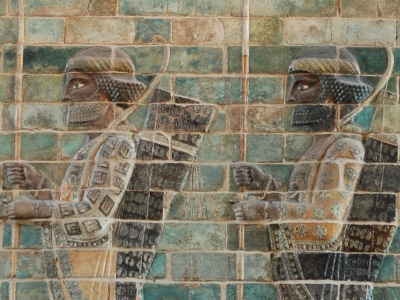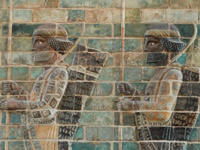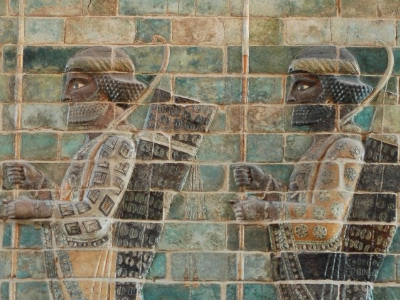Battle of Marathon (490 BC)

Opposing forces
Athenians
Herodotus does not give a figure for the size of the Athenian army. However, Cornelius Nepos, Pausanias and Plutarch all give the figure of 9,000 Athenians and 1,000 Plataeans; while Justin suggests that there were 10,000 Athenians and 1,000 Plataeans. These numbers are highly comparable to the number of troops Herodotus says that the Athenians and Plataeans sent to the Battle of Plataea 11 years later. Pausanias noticed on the monument to the battle the names of former slaves who were freed in exchange for military services. Modern historians generally accept these numbers as reasonable. The areas ruled by Athens (Attica) had a population of 315,000 at this time including slaves, which implies the full Athenian army at the times of both Marathon and Plataea numbered about 3% of the population.
Persians
According to Herodotus, the fleet sent by Darius consisted of 600 triremes. Herodotus does not estimate the size of the Persian army, only saying that they were a "large infantry that was well packed". Among ancient sources, the poet Simonides, another near-contemporary, says the campaign force numbered 200,000; while a later writer, the Roman Cornelius Nepos estimates 200,000 infantry and 10,000 cavalry, of which only 100,000 fought in the battle, while the rest were loaded into the fleet that was rounding Cape Sounion; Plutarch and Pausanias both independently give 300,000, as does the Suda dictionary. Plato and Lysias give 500,000; and Justinus 600,000.
Modern historians have proposed wide-ranging numbers for the infantry, from 20,000–100,000 with a consensus of perhaps 25,000; estimates for the cavalry are in the range of 1,000.
HISTORY

RESOURCES
This article uses material from the Wikipedia article "Battle of Marathon (490 BC)", which is released under the Creative Commons Attribution-Share-Alike License 3.0.
© Stories Preschool. All Rights Reserved.









